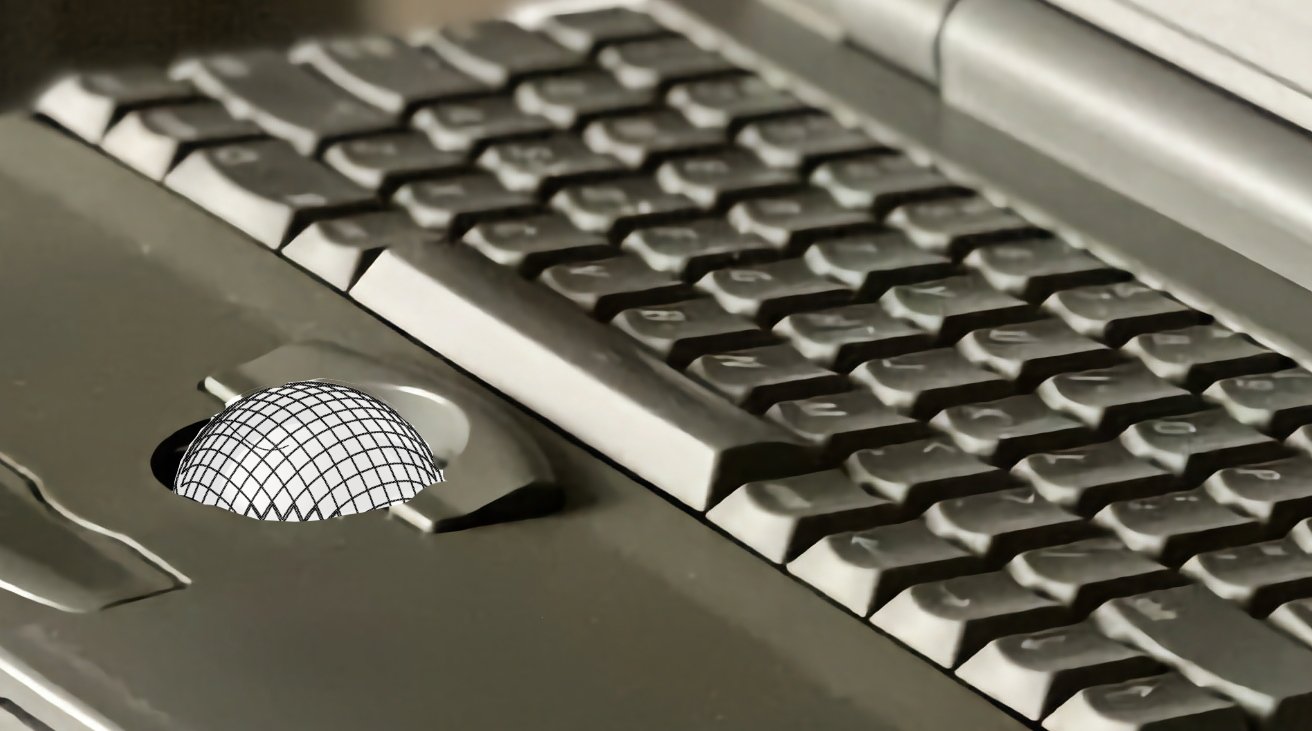A flat touch surface isn’t enough — thirty years after it retired the trackball in favor of touch-sensitive trackpads on PowerBooks, Apple could be planning to combine the two ideas into a new input device for the MacBook Pro.
First Apple did that thing of putting the trackball at the front of a laptop while moving the keyboard to the back — and everyone followed suit. Then in 1994 it introduced the PowerBook 500 series that had a trackpad, and everyone followed suit.
In 2024, a newly-granted patent suggests that Apple could be finally putting two and two together, to get a touch-sensitive trackball. That is definitely one clear example use case for the patent “Spherical or highly curved touch-sensitive surfaces.”
But importantly, this is one of those patents that dives into detail on how something could be done, and barely gives a glance to why, or for what purpose.
The patent is specifically about how a “two dimensional touch sensor panel can be thermoformed or curved by another process [in]to a three-dimensional touch sensor panel.” That panel can then be laminated onto a surface with a “highly curved or spherical shape.”
At present, trying to wrap a trackpad around a curved surface will strain it so that the trackpad at best distorts the touches it feels. At worst, it just breaks.
Apple proposes different ways of getting around this, so that ultimately it would be possible to have a touchscreen that is so curved that it could be a sphere. A trackball is actually fully spherical, it’s just that at least half of it is embedded with a chassis.
So this could well be about making a trackball that responds to touch — or to almost being touched. There are sections in this document that deal with how the right touch sensitive panel could react when a finger is merely very close to the surface.
If that extends to hands, maybe Apple is considering a smart crystal ball.
Apple does provide a single catch-all kind of explanation of what this could be used for, albeit in a way that is less about information and more about fighting off future infringement on the idea.
“[This proposal could be used in] a mobile phone, tablet, touchpad, portable or desktop computer, portable media player, wearable device or any mobile or non-mobile computing device (e.g., in-ear or over-ear headphones, speakers, smart hubs, mouse, keyboard, stylus, servers, watches, fitness trackers, eyeglasses, and/or accessories for the above devices),” says Apple, that includes a touch screen or touch sensor panel.
So from controls on an AirPod Max to a more touch-sensitive Apple Pencil, this patent covers everything Apple does.
Which is not to say that it will ever result in an actual product. Apple successfully applies for hundreds of patents every year and while it is an indication of the research work it’s doing, it is not a clue that a specific product will necessarily follow.
This patent is credited to eight inventors. They include Supratik Datta, whose previous work for Apple has been in areas to do with touch-detection on surfaces.








